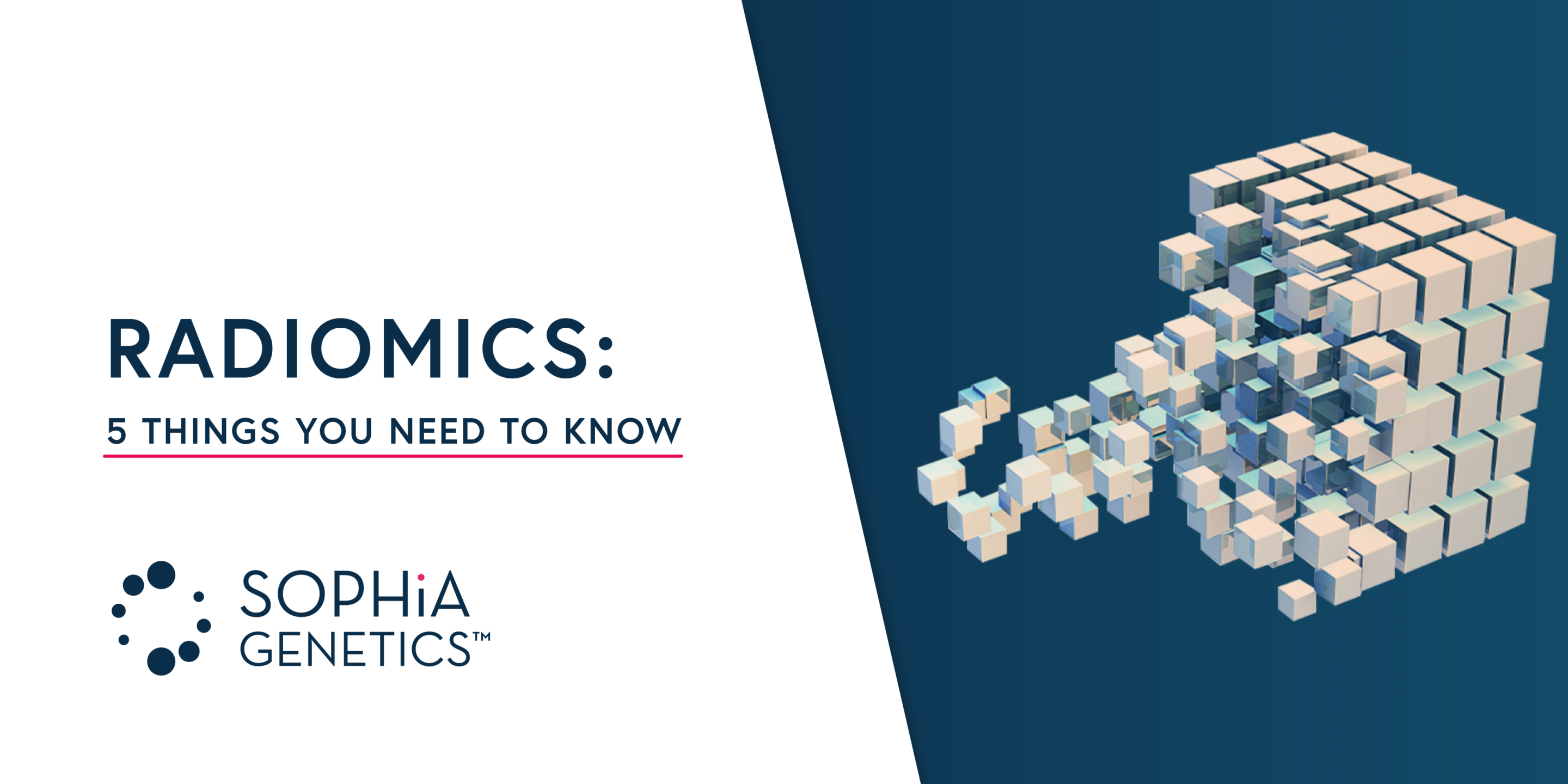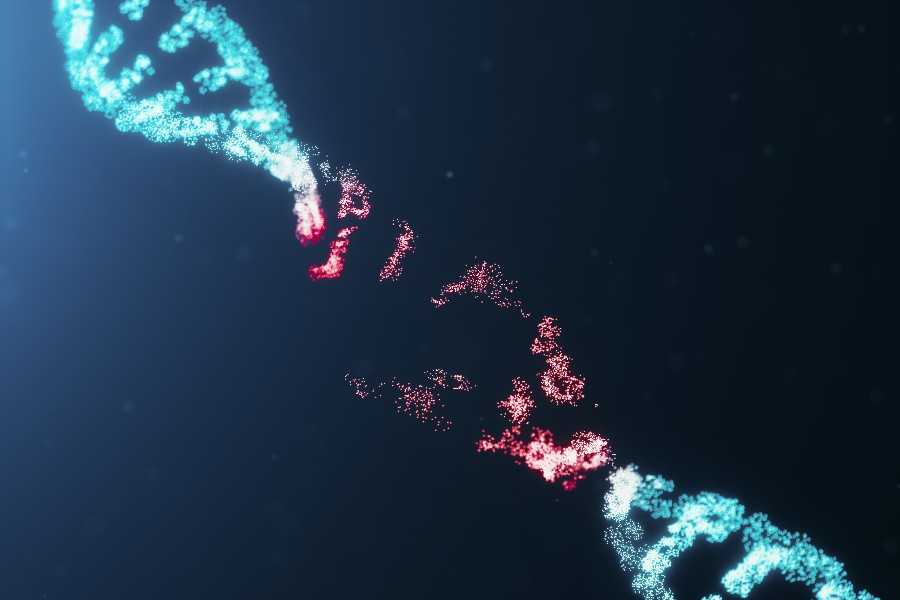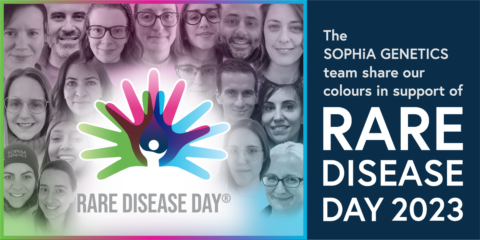In its very nature, cancer grows and evolves. Luckily, so does science. In order to combat one of the leading causes of death worldwide, doctors, data scientists, engineers, and countless other medical professionals have worked to discover new strategies to improve patient outcomes. Thanks to recent advancements in technology, patients are now receiving more accurate and uniquely personalized care through Precision Medicine. This requires the combination of all available health data in novel ways that doctors can interpret for new actionable insights for their patients. Leading this revolution of “multi-omics” in Data-Driven Medicine is the groundbreaking field of Radiomics.
You can learn more about Radiomics from our experts at RSNA.
What is Radiomics?
Radiomics is the science of “converting digital medical images such as PET or CT examinations and MR imaging, into mineable high-dimensional data,” (1) for medical professionals to use in clinical settings. These are routine examinations that doctors are already performing, which means Radiomics maximizes upon information that’s already being collected. The difference is how that info is used.
By extracting valuable quantifiable data from images that goes beyond what human eyes can detect, SOPHiA GENETIC’s smart algorithms (AI) equip clinical researchers with more detailed and accurate information from their data, including tumor characteristics or clues about the changes in growth following treatment. This goes beyond the traditional RECIST or PERCIST criteria. This offers experts predictive models based on sophisticated computer algorithms.
While Radiomics has become rapidly utilized within the field of oncology, this technology is applicable to all disease domains. With rapid growth in Radiomics technology, there are several immediate benefits and challenges to tackle as it becomes fully integrated into clinical settings.
Here are some of the things you need to know about Radiomics right now:
1. Tumor segmentation is tricky
2. Radiomics improves workflows
3. Standardizing biomarkers is necessary
4. Radiomics improves patient outcomes
5. Sharing knowledge saves lives
1. Tumor segmentation is tricky
Tumor segmentation is one of the most challenging aspects of Radiomics. This is the actual “capturing” of imaging data in which imaging technologies must go beyond simply scanning the diameter of a lesion. This can be quite time consuming and there is a need for a more simplified process that could be achieved through automation.
More intricate details and biomarkers are required to enhance research outcomes. Some experts have defined these new details as “habitats”. Habitats are the area related to a given tumor, including its’ distinct volumes such as blood flow, cell density, etc. Habitats refer to all of the various parts inside and around the tumor. The details of and differences between these habitats can give specific insights into treatment response, such as pseudoprogression (1, 3). The analysis of the distribution of habitats can eventually indicate which tumors will progress more aggressively than others.
Traditional radiology reports are not always able to integrate multimodal biomarkers or capture such a detailed analysis. It’s the combination of the different data sources that unlocks new potential in how we analyze and track the evolution of diseases in ways that experts were never able to before.
2. Radiomics improves workflows
Every industry is looking to be more efficient, but in the medical community, efficiency can remove so much of the horrible stress patients face and ultimately save lives. Seeking a more efficient workflow in the clinic continues to be the driving factor behind the development and adoption of Radiomics.
As a necessary pillar of work performed in the lab, medical imaging is routine in cancer diagnosis and determining a patients’ prognosis. Most, if not all, cancer patients will undergo various, standard examinations including CT, PET and MRI at some point early on in their diagnostic odyssey. The beauty of Radiomics is that it doesn’t require any additional expensive or invasive tests to work. It’s easily integrated into the workflow of medical imaging.
Currently, radiologists are overburdened by the ever-increasing demand of medical imaging and administrative charges (2). Reaching well beyond the capacities of dated computer-aided detection and diagnosis (CAD) systems of routine clinical work, Radiomics automates these mundane tasks and reduces the massive workload of radiologists and clinicians. It doesn’t replace their expertise, rather, as clinicians combine their expertise with the technology available, Radiomics will continue to help investigators transform digital images to uncover hidden patterns or specific information elusive to even the most deliberately trained and experienced eyes.
With Radiomics, clinical researchers will have extra time for more cognitively challenging tasks and be better supported to make the best decisions about their patients’ care.
3. Standardizing biomarkers is necessary
Accuracy, repeatability, reproducibility – these are the main challenges radiologists and oncologists face while analyzing patients’ tumor progression or response. Without Standardization, it can often feel like researchers are speaking different languages when cross-referencing examinations. In some cases, they are literally speaking different languages in their labs, so without standardization of data, things can become confusing.
Efforts like the Image Biomarker Standardisation Initiative (IBSI) are being made to better standardize image acquisition and data extraction. Going through an image slice by slice with manual segmentation results in regions of greater uncertainty compared to the more modern tools available (3). However, as new tools are developed, they come with more methods that are being used to extract features, thus resulting in more room for variables and bias.
There is ongoing debate about automated tools and how to anticipate potential error and risk with their use. It is necessary to continue to perform adequate risk assessment and validation studies in order to make sure the tools in doctors’ hands are not only easy to use, but safe. It’s a tale as old as time. As technology evolves, so must its accuracy.
4.Radiomics improves patient outcomes
As no technology has ever replaced a doctor’s final judgement, expertise or clinical skills, Radiomics simply provides doctors with more tools in their standards of care to treat their patients. Equipped with more actionable insights, doctors can better understand the underlying pathophysiology and choose the right therapeutic strategy for each given patient.
Every day there are new and exciting therapeutics developing in the field of oncology, such as immunotherapy. While the treatments are promising, new innovative tools are required to continue to comprehensively track and manage patients’ care. Radiomics provides clinicians with more dimensions of reliable and valuable data in order to chart out a path to better patient care and treatments that are best for the individual.
With Radiomics, clinicians can identify biomarkers in vivo over time, such as following tumor changes in volume, texture, and many other characteristics that define a response to treatment. As more medical professionals integrate this new technology into their clinic, Radiomics offers an exciting reality of democratized big-data – a future where clinicians can connect their unique patients to other complex cases or to clinical trials around the world.
5. Sharing knowledge saves lives
Responsible data sharing is the greatest challenge for the fast-growing field of Radiomics. There is a huge need to share information across institutions and clinics globally to connect patients to clinical trials or to support clinical decision-making. For AI to evolve, it’s also essential that algorithms are trained on new sets of data all the time. This takes collaboration.
For a dataset to be statistically relevant, a general rule-of-thumb is to have at least ten times more samples than the parameters you’re modeling (5). So, more data can mean better paths to accuracy. However, with the advancement of radiomic technologies, more and more unsupervised, unlabeled, or poorly curated datasets are becoming available. In some cases across the field, we’ve seen unreliable datasets being used to train automated tools, resulting in ineffective models (6). This is why SOPHiA GENETICS experts work to collect only the highest quality data, constantly examining the efficacy of what we analyze and share on the platform. We ensure that data is only shared in compliance with the applicable laws and requirements, adhering to the most up-to-date international standards.
Why radiomics?
Radiomics has the potential to offer a democratized data solution for both clinical and research purposes, bolstering a community of experts. Doctors rely on their years of experience and professional networks to decide which treatment will work best for a patient. With all of the targeted therapies available, Radiomics can help define, standardize, and cultivate big datasets for clinicians to tap into for each specific case, eventually connecting patients with similar profiles for treatments or clinical trials all over the world.
CLICK HERE TO CONTACT A SOPHiA GENETICS EXPERT TODAY
CLICK HERE TO CONTACT A GE HEALTHCARE EXPERT TODAY
The information included in this presentation has been prepared for and is intended for viewing by a global audience. This blog post contains information about products which may or may not be available in different countries and if applicable, may or may not have received approval or market clearance by a governmental regulatory body for different indications for use. Please consult local sales representatives. All product and company names are trademarks™ or registered® trademarks of their respective holders. Use of them does not imply any affiliation with or endorsement by them.
SOPHiA GENETICS’ Radiomics products are for Research Use Only and are not intended for purposes other than research. They are not for diagnostic, therapeutic, or treatment purposes.
References:
- Gillies RJ, Kinahan PE, Hricak H. Radiomics: Images Are More than Pictures, They Are Data. Radiology 2016;278:563-77. 10.1148/radiol.2015151169
- McDonald RJ et al. The effects of changes in utilization and technological advancements of cross- sectional imaging on radiologist workload. Acad. Radiol 2015 ;22, 1191–1198
- Gerwing M., Herrmann K., Helfen A., Schliemann C., Berdel W.E., Eisenblätter M., Wildgruber M. The Beginning of the End for Conventional RECIST—Novel Therapies Require Novel Imaging Approaches. Nat. Rev. Clin. Oncol. 2019 doi: 10.1038/s41571-019-0169-5
- Velazquez ER, Parmar C, Jermoumi M. Et al. volumetric CT-based segmentation of NSCLC using 3D-slicer. Sci Rep. 2013;3:3529. doi: 10.1038/srep03529
- Peeken JC, Bernhofer M, Wiestler B, et al. Radiomics in radiooncology—challenging the medical physicist. Phys Med. 2018;48:27–36. doi: 10.1016/j.ejmp.2018.03.012
- Hosny A, Parmar C, Quackenbush J, Schwartz LH, Aerts HJWL. Artificial intelligence in radiology. Nat Rev Cancer. (2018) 18:500–10. 10.1038/s41568-018-0016-5












